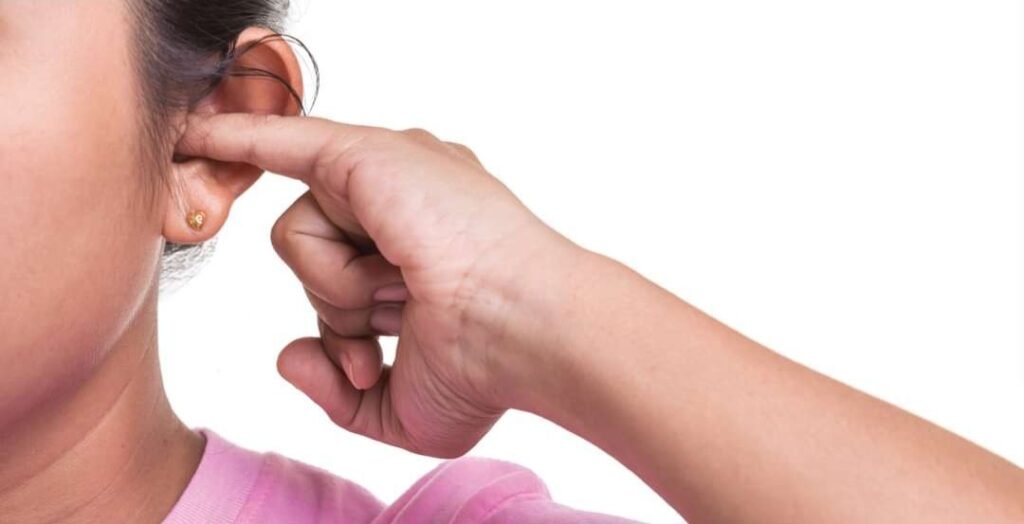
Overview
Water getting trapped in your ears can be an irritating experience. Whether after swimming, showering, or enjoying water sports, it’s common to feel water stuck inside your ear canal. This can lead to muffled hearing, discomfort, and in some cases, ear infections such as swimmer’s ear. Thankfully, there are several effective methods to help remove the trapped water safely and prevent further complications. In this article, we’ll walk you through the best ways to get water out of your ears and maintain ear health.
Causes of Water Getting Stuck in Your Ears
Water can enter the ear in various ways, especially during activities like swimming, bathing, or even washing your hair. Some people with narrow ear canals are more prone to water retention, and the water may not drain out naturally, leading to discomfort and the risk of infection
Symptoms of Water in the Ear
- Muffled or reduced hearing
- A feeling of fullness or blockage in the ear
- A tingling or tickling sensation inside the ear canal
- Increased discomfort when tilting the head
- Potential pain or itching if left untreated for a prolonged period
Home Remedies to Remove Water from Your Ears
Related :Safe and Effective Home Remedies for Ear Wax Removal
- Tilt Your Head and Shake It Gently
– One of the simplest methods is to tilt your head to the side with the affected ear facing downward. Gently tug on your earlobe to open the ear canal, and shake your head in a gentle up-and-down motion. This technique uses gravity to help water drain out naturally. - Lie on Your Side
– Another gravity-based method is lying down on your side, with the affected ear facing the pillow. Stay in this position for a few minutes, and gravity should allow the water to slowly drain out. You may feel a slight sensation as the water leaves your ear. - Create a Vacuum with Your Hand
– Place your palm over the affected ear, ensuring that it creates a seal. Then, gently push your hand against your ear and pull it away in quick movements. This creates a slight vacuum effect, which may help dislodge the water. After a few tries, the trapped water should come out. - Use the Valsalva Maneuver
– The Valsalva maneuver can help equalize pressure and open the Eustachian tubes, which may assist in releasing trapped water. To perform this technique, pinch your nostrils closed, take a deep breath, and gently blow air out of your nose while keeping your mouth shut. Be careful not to blow too hard, as this can cause damage. - Use a Hair Dryer
– A hair dryer can be a useful tool to evaporate trapped water. Set the dryer to its lowest heat setting and hold it a few inches away from your ear. While gently pulling on your earlobe, move the dryer in a back-and-forth motion to allow warm air to flow into the ear canal. This should speed up the evaporation process. - Try Alcohol and Vinegar Drops
– A mixture of alcohol and vinegar can help to both evaporate trapped water and break down any earwax that might be causing a blockage. Mix equal parts of rubbing alcohol and white vinegar, and using a clean dropper, place a few drops into the affected ear. Allow the mixture to sit for about 30 seconds, then tilt your head to let the solution and water drain out. - Chewing or Yawning
– Simple motions like chewing gum or yawning can help open the Eustachian tubes, allowing water to drain from the middle ear. This is a useful method if the water feels like it’s deeper in your ear canal. - Over-the-Counter Eardrops
– There are several over-the-counter eardrops specifically designed to help remove trapped water. These drops work by breaking down the fluid in the ear, making it easier to evaporate or drain. You can find these at most pharmacies, and they are typically safe to use as directed.
How to Prevent Water from Getting Trapped in Your Ears
Prevention is key to avoiding the discomfort of waterlogged ears. Here are some ways to keep water out of your ears:
- Wear Earplugs: Invest in waterproof earplugs designed for swimming or showering. These plugs create a seal that prevents water from entering the ear canal.
- Dry Your Ears After Swimming or Bathing: After exiting the water, use a clean towel to thoroughly dry your ears. Tilt your head to each side to let any trapped water escape. Avoid inserting anything, such as cotton swabs, deep into your ear canal, as this can push water further in and cause more problems.
- Use a Swim Cap: Wearing a tight-fitting swim cap can help prevent water from entering your ears while swimming. This is especially useful for those prone to ear infections.
- Ear Drops Before Swimming: If you’re frequently in the water, you can use preventive ear drops before swimming. These drops are designed to coat the ear canal, making it more difficult for water to get trapped
When to Seek Medical Attention
In most cases, water in the ear will resolve on its own or with the help of home remedies. However, there are times when it’s important to see a doctor. Seek medical advice if you experience:
- Water trapped in the ear for more than 48 hours
- Severe pain, swelling, or discomfort
- Hearing loss that persists
- Discharge from the ear, especially if it’s not water
- Signs of infection, such as fever, redness, or swelling
Untreated ear infections can lead to complications, so it’s important to address any concerning symptoms with a healthcare professional.
The Takeaway
Water trapped in your ears can be uncomfortable, but with the right techniques, it’s usually easy to resolve at home. Whether using gravity, suction, or a gentle air dryer, these methods can help you get relief quickly. It’s important to act promptly to avoid infections, and preventive measures such as wearing earplugs can help you avoid the problem altogether. If home remedies don’t work and symptoms persist, it’s always best to consult a doctor to prevent complications and ensure your ears stay healthy.
By following these tips, you can maintain your ear health and enjoy your time in the water without worry
Frequently Asked Questions
- What should I do if the water doesn’t come out of my ear after trying home remedies?
– If water remains trapped after attempting home remedies like tilting your head, using a hair dryer, or applying ear drops, it’s important to avoid inserting objects into your ear. If the water doesn’t come out within 48 hours, or if you experience pain or signs of infection, consult a healthcare professional for further assistance. - Is it safe to use a hair dryer to remove water from my ear?
– Yes, using a hair dryer on its lowest heat setting and holding it a few inches away from your ear is generally safe. Move the dryer back and forth while pulling on your earlobe to allow warm air to flow into the ear canal, which can help evaporate the trapped water. - Can trapped water in the ear cause an ear infection?
– Yes, if water remains trapped in the ear for an extended period, it can create a moist environment that encourages bacterial growth, leading to infections like swimmer’s ear. It’s important to remove the water as soon as possible to reduce the risk of infection. - How can I prevent water from getting stuck in my ears while swimming?
– To prevent water from becoming trapped, wear waterproof earplugs or a swim cap while swimming. After getting out of the water, thoroughly dry your ears with a towel and tilt your head to release any trapped water. Using preventive ear drops before swimming can also help.











